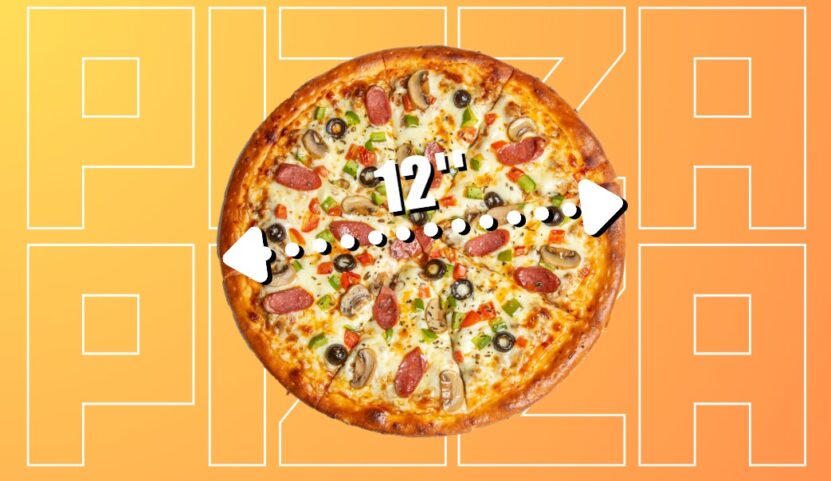Welcome to the world of pizza mathematics! Today, we’re going to be looking at the magic behind the seemingly simple 12-inch pizza, exploring its dimensions, capacity, comparison with other pizza sizes, and, ultimately, its value for money. It’s more than just a circle of cheesy deliciousness; it’s a fantastic case study of geometry and economics intertwined.
From pizzerias to home kitchens, the 12-inch pie has been a standard go-to size for many. It strikes a balance between being not too large, not too small, but just right for certain occasions. But why is this size so popular? To answer this question, we will need to delve deeper into the world of mathematics.
Pizza Sizes Explained
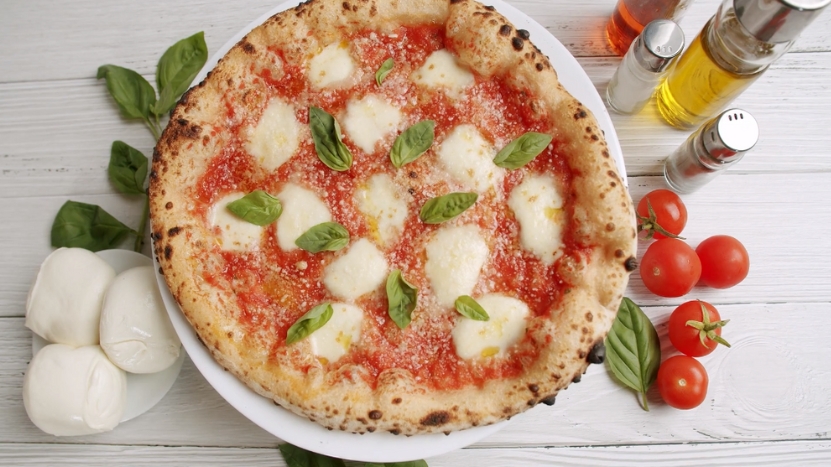
Pizza sizes are typically described by the length of their diameter. The diameter is the straight line passing from one side of the circle (the pizza in this case) to the other side, through the center. In this case, a 12-inch pie means that if you measure from one edge of the pie to the other, passing through the center, the distance will be 12 inches.
In most pizza establishments, the standard sizes usually range from 10 inches to 16 inches in diameter, with the 12-inch pie considered a medium size. Remember, as pie sizes increase, the difference in pie area is greater than one might initially perceive. A pie that is a few inches larger in diameter will have significantly more total pie surface area.
Therefore, to understand the actual size of your pizza, you need to consider the diameter and the area it covers, which gives you a better understanding of the actual amount of pizza you’re getting. While a couple of inches difference in diameter might not seem substantial, it can make a huge difference in terms of total pizza area.
How Does a 12-Inch Pizza Measure Up?
When it comes to pizza, size definitely matters. A 12-inch pizza is often considered the sweet spot for pizza lovers. It offers a significant amount of pie without being too overwhelming. But how does it measure up, literally? A 12-inch pie, being a circle with a diameter of 12 inches, covers an area of approximately 113 square inches. That’s a considerable surface for delicious toppings!
By comparison, a 10-inch pie covers approximately 79 square inches, while a 16-inch pizza covers about 201 square inches. So, a 12-inch pie is significantly larger than a 10-pie and yet not quite as formidable as a 16-inch one. That’s part of what makes it a crowd favorite: it’s just right for several scenarios.
Of course, the thickness of the pie also plays a role in the total amount of pizza you get. A thin-crust 12-inch pizza will have less total pizza than a deep dish of the same diameter. However, since pizza thickness varies quite a bit and is often a matter of personal preference, we’ll focus on diameter for this exploration.
Serving Size and Portion Control
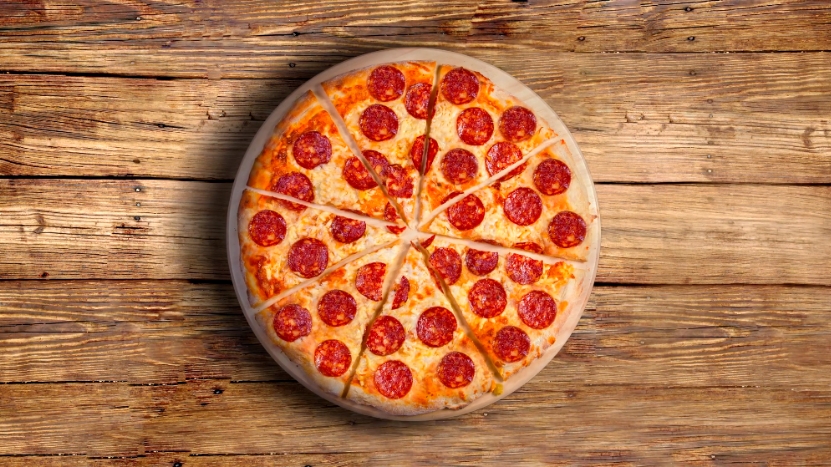
One of the benefits of choosing a 12-inch pizza is that it’s perfect for portion control. This size usually offers eight slices, which are perfect for serving two to four people, depending on appetite and the presence of side dishes. You’re able to feed a small group without excessive leftovers or feeling like there isn’t enough to go around.
With the smaller 10-inch pies, you might find that larger appetites aren’t quite satisfied without an additional side dish or a second pie. Conversely, a 16-inch pizza might be too much for a smaller group, leading to the leftover pie that may or may not get eaten later.
In essence, a 12-inch pizza helps in controlling portion sizes and ensuring that everyone at the table gets their fair share. For those conscious of their food intake, this is also an easy way to keep track of portions, especially if you’re sharing the pizza with someone else.
The Math Behind a 12-Inch Pizza
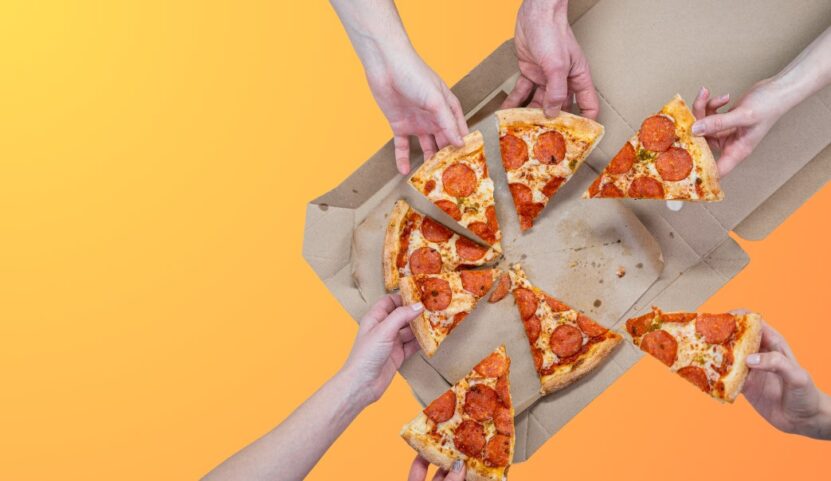
The area of a pizza is calculated using the formula for the area of a circle, which is πr² (pi times the radius squared). In the case of a 12-inch pizza, the radius is half the diameter, i.e., 6 inches. Therefore, the area of a 12-inch pizza is about 113.04 square inches.
This mathematical principle can be used to compare the actual sizes of different pizza options. For example, a 16-inch pie is not merely a third larger than a 12-inch pie, as one might initially think. In reality, a 16-inch pie, with its approximate area of 201 square inches, is nearly twice the size of a 12-inch pie.
Understanding the math behind pizza sizes helps to compare the amount of pizza you get and also allows for a more accurate comparison of the prices. Just looking at the diameters can be misleading, but considering the actual area gives a true picture of what you’re getting for your money.
Exploring the Capacity
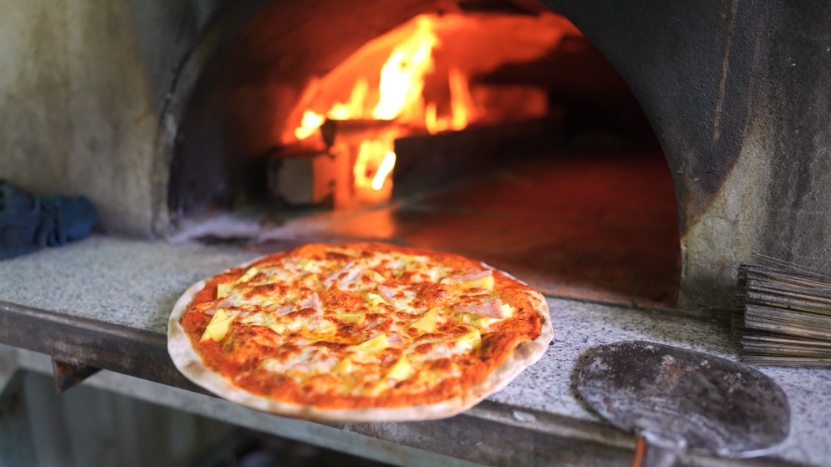
Exploring the capacity of a 12-inch pizza requires understanding how toppings cover the surface. The pizza capacity refers to the amount of space available for toppings. More space means more toppings and more flavor per bite. With a 12-inch pie, you get a balanced distribution of toppings throughout each slice.
Smaller pizzas, such as the 10-inch ones, have less capacity for toppings, which could lead to overcrowded slices or fewer toppings per bite. On the other hand, larger pizzas like the 16-inch ones might offer more space for toppings, but they might also lead to a toppings-overload situation where the base can’t support the weight of the toppings, leading to a less-than-ideal pizza-eating experience.
The 12-inch pizza offers a perfect balance, allowing for a generous amount of toppings without overwhelming the base. This balance ensures that you get a good mix of crust, sauce, cheese, and toppings in every bite.
The 12-Inch Pizza vs. Other Common Sizes: Which Is Right for You?
When it comes to pizza, there isn’t a one-size-fits-all solution. The best size for you depends on a few factors such as the number of people eating, their appetite levels, and your topping preferences.
A 12-inch pizza is an excellent middle-ground choice. It offers more than enough pizza for one person and can comfortably satisfy two to three people. It also gives a decent amount of room for a variety of toppings. Therefore, if you’re sharing with a friend or having a small gathering, the 12-inch pie is a safe bet.
If you’re hosting a larger group, or have big appetites to feed, a 16-inch pie might be the better choice. Although it’s significantly larger than the 12-inch, remember that this could also mean more leftovers if you overestimate your guests’ hunger levels. For a personal meal or a smaller appetite, a 10-inch pizza might be the perfect size.
How Many Slices Are in There?
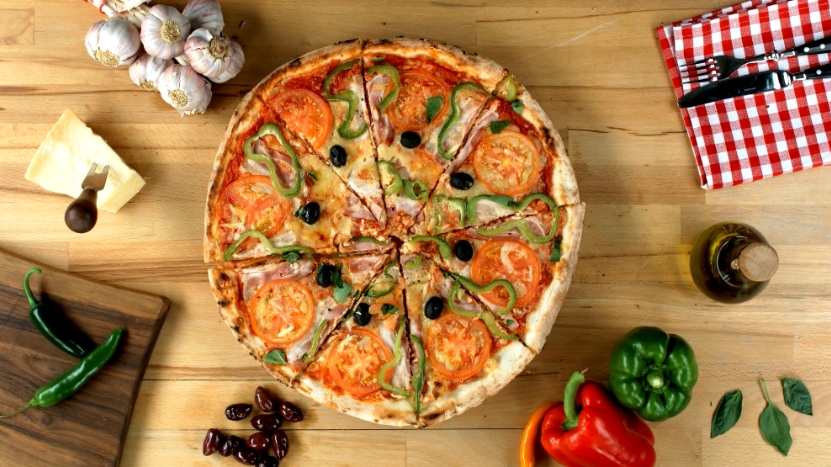
Typically, a 12-inch pizza is cut into 8 slices. However, this can vary based on the pizzeria or even personal preference. Some places might cut it into 10 smaller slices, especially if there are more people sharing. If you’re slicing it at home, you have the flexibility to decide how many slices you prefer.
Regardless of the number of slices, the total amount of pizza remains the same. Cutting a pizza into more slices doesn’t give you more pizza, it just gives you smaller pieces. This can be handy for portion control, as people might take fewer slices if they’re smaller, even if they end up eating the same amount of pie overall.
If you’re considering how many slices to request or cut, consider the appetites of those you’re serving. For smaller appetites, more slices might be appropriate. For larger appetites, stick to the standard eight slices for a 12-inch pie.
Maximizing Value: Is a 12-Inch Pizza Worth the Price?
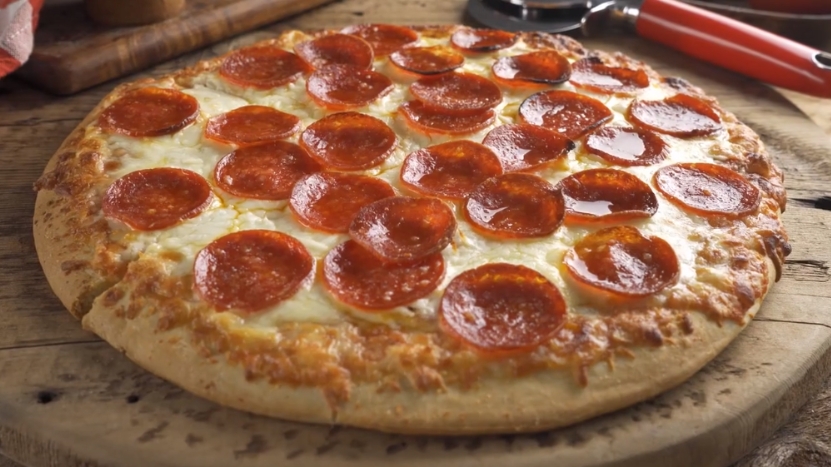
The answer to this question isn’t as simple as a yes or no. It largely depends on the price difference between the sizes, and how many people you’re planning to feed. By using the area of the pizzas, you can calculate the price per square inch, which gives you a clear comparison between the sizes.
Typically, the larger the pizza, the cheaper the price per square inch. So, if you’re feeding a larger group, it might be more cost-effective to go for a larger pizza. However, if you’re only feeding a few people, a 12-inch pizza might be the perfect balance between cost and amount of pizza.
Moreover, don’t forget to consider the enjoyment factor. If a 12-inch pizza is a perfect size for your gathering, and the price is within your budget, it might be worth paying a little more for the convenience and satisfaction of having the right amount of pizza.
The Perfect Choice for Small Gatherings

With its moderate size and ample capacity for toppings, a 12-inch pizza is an excellent choice for small gatherings. It strikes the perfect balance of being substantial enough to satisfy, yet not so large that you’re likely to have lots of leftovers.
Whether you’re hosting a small party, enjoying a family dinner, or watching a game with friends, a 12-inch pizza has got you covered. It’s large enough to serve a few people and small enough that you won’t feel like you’re wasting food if you don’t finish it all.
Another advantage of choosing a 12-inch pie for your gathering is that you can afford to be adventurous with your toppings. Because it’s a medium size, it’s not too much of a commitment. So go ahead and try that intriguing new topping combination! If your guests aren’t fans, it’s not as much of a loss as it would be with a larger pie.
Final Words
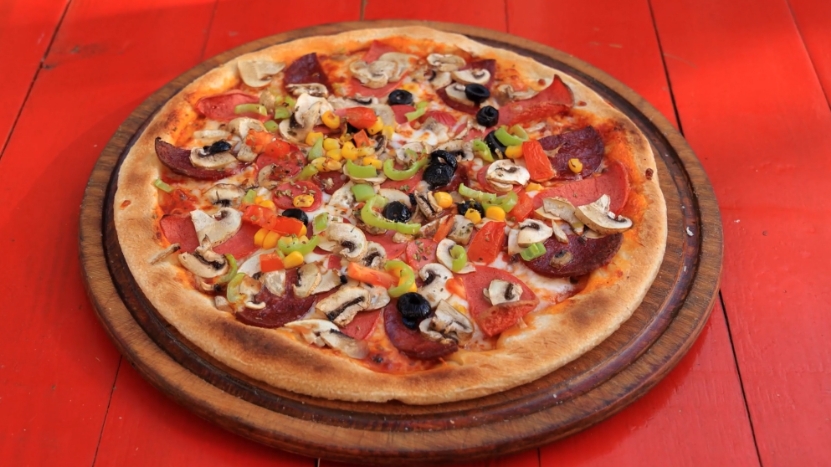
Understanding the dimensions, capacity, and value of a 12-inch pie can enhance your pizza-ordering experience. Whether you’re feeding a crowd or just enjoying a quiet night in, knowing what to expect from your pizza can help ensure that everyone gets their fill.

